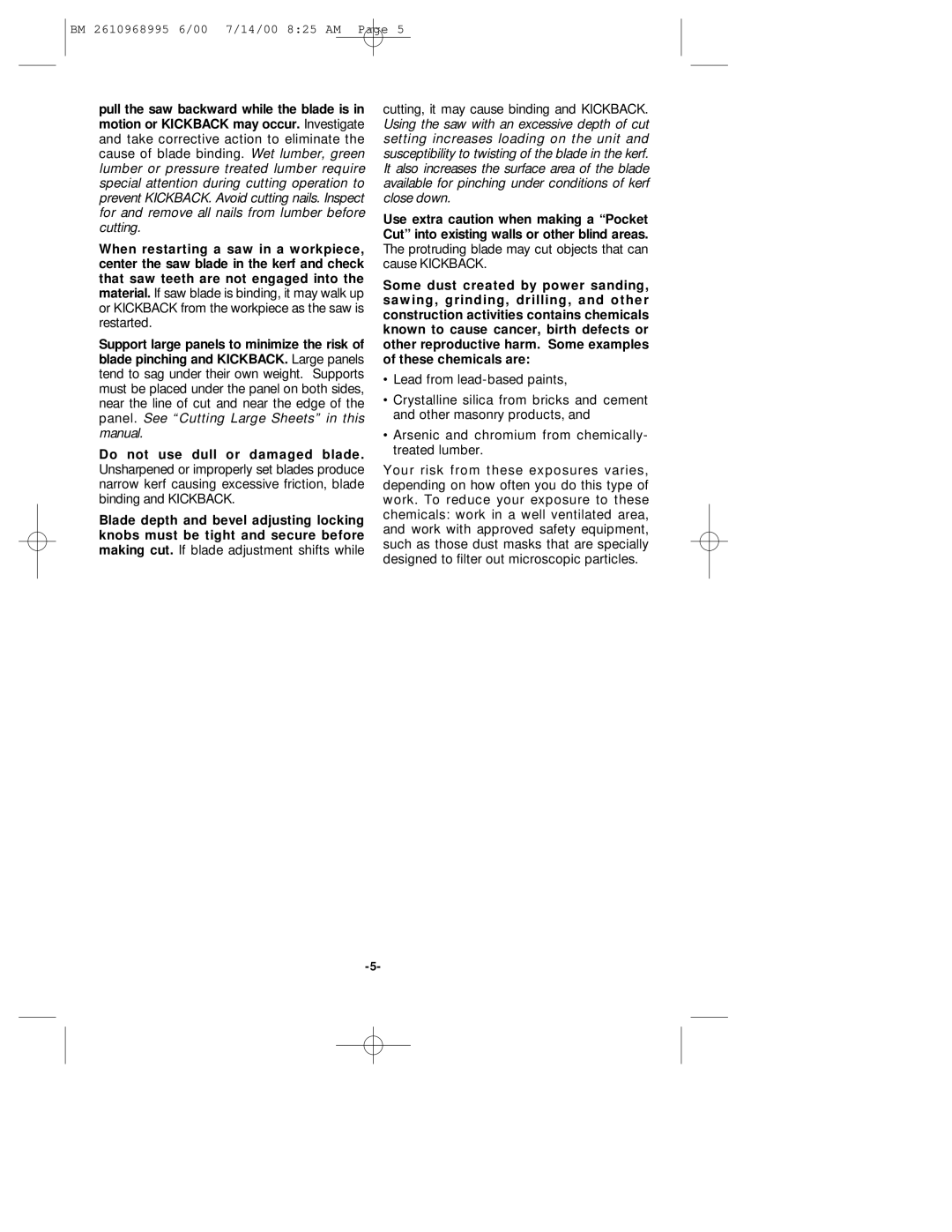1658 specifications
Bosch Power Tools has long been a renowned name in the world of power tools, and among its diverse offerings, the Bosch 1658 model stands out for both professionals and DIY enthusiasts alike. This versatile tool is designed to provide superior performance and reliability in various applications, making it a go-to choice for many.The Bosch 1658 is an advanced angle grinder known for its exceptional power and efficiency. One of its main features is the robust motor that delivers high torque and speed, enabling it to handle even the toughest materials with ease. With a no-load speed of 11,500 RPM, this tool can cut, grind, and polish swiftly, which enhances productivity in various tasks.
In addition to its powerful motor, the Bosch 1658 incorporates advanced technologies designed to improve user experience. One significant feature is the Constant Electronic system, which ensures consistent speed under load, maintaining optimal performance even when working on demanding tasks. This technology not only enhances control but also prolongs the life of the tool.
The design of the Bosch 1658 emphasizes ergonomics and user comfort. It boasts a slim grip that allows for better handling and reduced fatigue during extended use. The auxiliary handle is adjustable and designed to provide a stable grip, offering the user flexibility in positioning for various angles and applications.
Safety is also a top priority in the design of the Bosch 1658. The tool is equipped with a safety guard that can be adjusted without the need for tools, providing protection while allowing for quick changes in application. Additionally, it features a spindle lock for easy disc changes, enhancing efficiency and user safety.
The Bosch 1658 is ideal for a broad range of applications including cutting, grinding, and polishing in metalworking, construction, and repair projects. Its robust build and powerful performance make it suitable for both heavy-duty tasks and intricate work, showcasing its versatility.
In summary, the Bosch 1658 Power Tool combines powerful motor performance, advanced electronic features, ergonomic design, and safety mechanisms, making it an essential addition to any toolkit. Whether you are a professional tradesperson or a dedicated DIYer, this angle grinder meets the demands of various projects, ensuring reliability and efficiency on every job.

